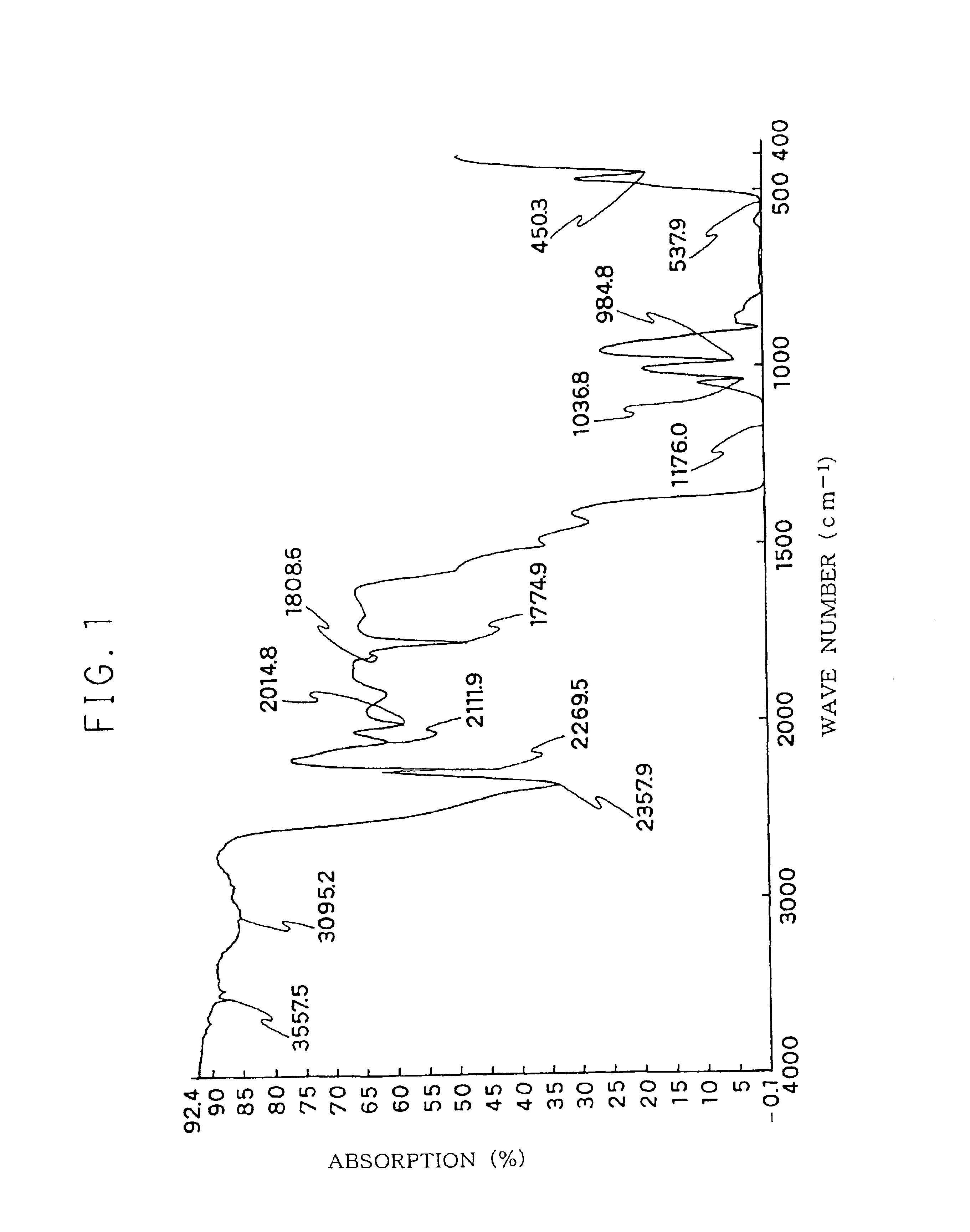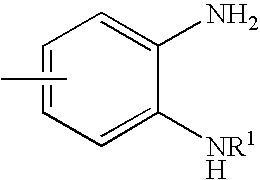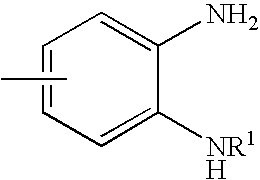Fluoroelastomer composition for crosslinking
a technology of fluoroelastomer and composition, applied in the field of elastomer composition for crosslinking, can solve the problems of significant deterioration of molded objects and limited application of them
- Summary
- Abstract
- Description
- Claims
- Application Information
AI Technical Summary
Benefits of technology
Problems solved by technology
Method used
Image
Examples
preparation example 1
(Synthesis of Cn Group-Containing Elastomer A)
A 3-liter stainless steel autoclave having no ignition source was charged with 1 liter of pure water, 10 g of:
as an emulsifying agent and 0.09 g of disodium phosphate 12H2O as a pH control agent. After the inside of a system was sufficiently replaced with nitrogen gas and deairing was carried out, the autoclave was heated to 50° C. with stirring at 600 rpm, and a gas mixture of tetrafluoroethylene (TFE) / perfluoro(methyl vinyl ether) (PMVE) (TFE / PMVE=25 / 75 in mole ratio) was introduced so that the inside pressure became 0.78 MPa·G. Then 10 ml of an aqueous solution of ammonium persulfate (APS) having a concentration of 527 mg / ml was introduced with pressurized nitrogen gas to initiate a reaction.
With the advance of the polymerization, at the time when the inside pressure was lowered to 0.69 MPa·G, 3 g of CF2═CFOCF2CF(CF3)OCF2CF2CN(CNVE) was introduced with pressurized nitrogen. Then 4.7 g of TFE and 5.3 g of PMVE were introduced at the r...
preparation example 2
(Synthesis of COOH Group-Containing Elastomer)
A 3-liter stainless steel autoclave having no ignition source was charged with 1 liter of pure water, 10 g of:
as an emulsifying agent and 0.09 g of disodium phosphate-12H2O as a pH control agent. After the inside of a system was sufficiently replaced with nitrogen gas and deairing was carried out, the autoclave was heated to 50° C. with stirring at 600 rpm, and a gas mixture of tetrafluoroethylene (TFE) / perfluoro(methyl vinyl ether) (PMVE) (TFE / PMVE=25 / 75 in mole ratio) was introduced so that the inside pressure became 0.78 MPa·G. Then 10 ml of an aqueous solution of ammonium persulfate (APS) having a concentration of 527 mg / ml was is introduced with pressurized nitrogen gas to initiate a reaction.
With the advance of the polymerization, at the time when the inside pressure was lowered to 0.69 MPa·G, 1.89 g of CF2═CFOCF2CF(CF3)OCF2CF2COOH (CBVE) was introduced with pressurized nitrogen. Then 4.7 g of TFE and 5.3 g of PMVE were introduced...
preparation example 3
(Synthesis of CN Group-Containing Elastomer B)
A 45-liter stainless steel autoclave having no ignition source was charged with 27 liter of pure water, 270 g of:
as an emulsifying agent and 2.4 g of disodium phosphate-12H2O as a pH control agent. After the inside of a system was sufficiently replaced with nitrogen gas and deairing was carried out, the autoclave was heated to 50° C. with stirring at 200 rpm, and a gas mixture of tetrafluoroethylene (TFE) / perfluoro(methyl vinyl ether) (PMVE) (TFE / PMVE=25 / 75 in mole ratio) was introduced so that the inside pressure became 0.78 MPa·G. Then 473 ml of an aqueous solution of ammonium persulfate (APS) having a concentration of 0.3 g / ml was introduced with pressurized nitrogen gas to initiate a reaction.
With the advance of the polymerization, at the time when the inside pressure was lowered to 0.69 MPa·G, 15.3 g of CF2═CFOCF2CF(CF3)OCF2CF2CN(CNVE) was introduced with pressurized nitrogen. Then 54 g of TFE and 60 g of PMVE were introduced at th...
PUM
| Property | Measurement | Unit |
|---|---|---|
| temperature | aaaaa | aaaaa |
| crosslinkable | aaaaa | aaaaa |
| mechanical strength | aaaaa | aaaaa |
Abstract
Description
Claims
Application Information
 Login to View More
Login to View More - R&D
- Intellectual Property
- Life Sciences
- Materials
- Tech Scout
- Unparalleled Data Quality
- Higher Quality Content
- 60% Fewer Hallucinations
Browse by: Latest US Patents, China's latest patents, Technical Efficacy Thesaurus, Application Domain, Technology Topic, Popular Technical Reports.
© 2025 PatSnap. All rights reserved.Legal|Privacy policy|Modern Slavery Act Transparency Statement|Sitemap|About US| Contact US: help@patsnap.com



